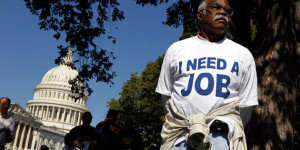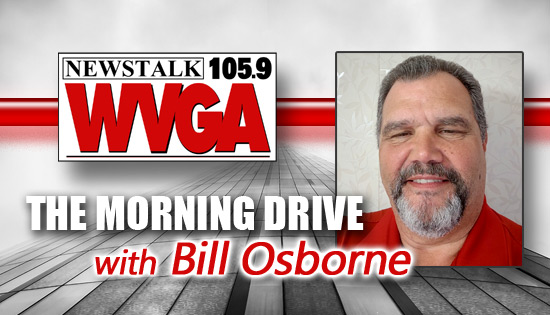 EDITORIAL—As the 2014 midterm cycle heats up, so is the campaign rhetoric and confounding debates rooted in divisive wedge issues. On Friday, May 9, House Republicans, under the leadership of Speaker John Boehner of Ohio, announced their intention to form a select committee to investigate the Benghazi tragedy. The September 2012 incident left four members of the U.S. Foreign Service dead and ten injured. Among the dead was the U.S. Ambassador to Libya, J. Christopher Stevens.
EDITORIAL—As the 2014 midterm cycle heats up, so is the campaign rhetoric and confounding debates rooted in divisive wedge issues. On Friday, May 9, House Republicans, under the leadership of Speaker John Boehner of Ohio, announced their intention to form a select committee to investigate the Benghazi tragedy. The September 2012 incident left four members of the U.S. Foreign Service dead and ten injured. Among the dead was the U.S. Ambassador to Libya, J. Christopher Stevens.
Similarly, President Obama is hitting the campaign trail for the final midterms of his presidency, touting his signature legislative achievement: the Affordable Care Act. This comes as national Democrats are hailing Obamacare’s aggregate enrollment level clinching the 8 million mark. National Democrats have cited a slew of polling data which suggests that public opinion of the Affordable Care Act is shifting, with a majority of American’s supporting the law or wanting to improve it—not repeal it.
While both national Democrats and Republicans are beginning to dig-in for the ensuing midterm battle, there is an exhibited disconnect between that which national lawmakers are tirelessly triumphing and pushing for on the stump and what most Americans are most concerned about. In short, Americans want our political leaders to focus their collective energies on the economy and, above all, jobs. That’s not to say affordable healthcare reform is not particularly salient. Further, the Benghazi tragedy rightfully deserves oversight and congressional scrutiny. Nevertheless, the American public, in numerous successive polls, has indicated the most important national priority is the economy and jobs.
Two weeks ago, President Obama submitted to Congress a proposal to ensure fiscal solvency of the National Highway Trust Fund. In the $302 billion legislation, road and transit projects would be funded for four years in order to improve and expand the nation’s crumbling infrastructure. Transportation Secretary Anthony R. Foxx has stated that this initiative would inject much needed federal infrastructure funding into an already slumping economy and disintegrating industrial backbone—the national road system. Further, and most importantly, President Obama’s highway bill would create scores of new jobs. By expanding and repairing America’s decrepit federal interstate system, the jobs created would be replete; front-line road construction workers, government contractors who supply raw materials and equipment, local businesses near construction areas, and countless other related jobs would be generated by improving our nation’s road system.
A push for expanding national infrastructure harkens back to the pivotal New Deal programs of the 1930s. In the midst of the worst economic depression in modern times, President Franklin Roosevelt made critical investments in our national infrastructure while creating jobs in the bottomed-out national economy. Nowhere is the success of the New Deal more pronounced than in rural Dixie. The Rural Electrification Act of 1935 installed the Rural Electrification Administration (REA), who provided loans in order to bring electrical power to the furthest reaches of rural America. Similarly, the Tennessee Valley Authority Act of 1933 established the Tennessee Valley Authority (TVA). The TVA is a government-owned corporation and the single largest public power provider in the United States. Countless other government programs like the Agricultural Adjustment Act (AAA), Federal Aviation Administration (FAA), Federal Deposit Insurance Corporation (FDIC), the Works Progress Administration (WPA), and the like made unassailable contributions to the depressed American economy by injecting much needed federal largess into the most downtrodden portions of the country. In a literal sense, the New Deal programs were not only creating essential American jobs by investing in the twentieth century economy, but were building modern America.
National infrastructure investments do not merely create jobs confined to the duration of a scheduled project. For instance, road improvements make an area more attractive to industrial firms who employ our nation’s extensive road network to conduct their enterprises. Improving sewage and electrical networks make large tracts of land more desirable for land developers. Unequivocally, when former Republican presidential candidate W. Mitt Romney adamantly claimed, while debating President Obama at the second and final presidential forum during the 2012 cycle, that the government does not create jobs, he could not have been further from understanding the premise of government job creation.
Sure, the fact remains that most jobs remain in the private sector—where they should be. Though, any claim that the government cannot or does not create any job is disregarding the basic reality that government jobs do, in fact, exist. Most would, however, agree with the basis of Mitt Romney’s argument that government can and should create the positive conditions for job creation, and not solely be focused on the direct creation of public sector employment. Nevertheless, ironically, Mitt Romney was campaigning for the presidency, hoping to secure a government job.
Even so, if the government was not an important element in the creation of jobs, then why do most Americans feel it should be, consistently, the top legislative priority considered by federal lawmakers? Sure, rather obviously, the government does not create all jobs. Governments do, however, create many jobs. Furthermore, both federal and state governments should work in concert to focus on jobs—whatever the conceptualization, private or public. For it does not matter to the construction worker whether or not his job is funded through private or public means—what matters is whether or not he is employed; whether or not he can adequately feed and provide for his family. Too often, political leaders, both Democrats and Republicans, forget (or maybe more appropriately, conveniently dismiss) that there is a general consensus on the ends; the ends of what our society, collectively, desires. Often we are left fighting over the means: how we are to accomplish our goals. Each American yearns for a strong middle class, a thriving industrial sector, and a fair shot at pursuing the American Dream.
What does it say about an American public who will not rally around growing income disparity, pay inequality, and a vanishing middle class, but on sensational wedge issues—the Benghazi incident and the ACA to name two. Americans regularly articulate that they want to talk about jobs, but their cries fall on deaf ears. America’s crumbling national infrastructure should be among our top priorities in investing in this new century. The New Deal-era infrastructure of the 1930s was the necessary backbone to support the massive allied war effort abroad; further, a strong national infrastructure created the essential foundation for returning GI’s to build the thriving and expansive postwar economy of the 1950s on the home front.
While the postwar infrastructure was far superior compared to the decimated nations of Western Europe, it was by no means, completely adequate. Twentieth century American economist John Kenneth Galbraith, in his 1958 seminal work, The Affluent Societycontended that postwar America had seen large private sector affluence and growth yet remained poor in the public sector—specifically, with the case of national infrastructure. Today, corporate profits continually reach record highs and the income gap between middle earners and the upper crust of American society continues to grow, the wealth gap between social strata and economic sectors will only continue to fester.
A growing middle class is not only beneficial for the economy as a whole, but it also has a rather reductionist impact on American families. More middle class families mean more buying power. Families with more disposable income will go out to dinner more often, spend more on groceries, see a movie at the local cinema, or even purchase a new automobile. A rising middle class means that more Americans will spend more—which is good for not only those at the bottom, but those at the top who own the very firms more families will patronize.
When Americans invest in American infrastructure, the benefits are replete. To summarize, that means more middle class American jobs, a more efficient national transportation network for industry, and a stronger economy for not only those on the bottom, but those on the top. So then, the question becomes how do we pay for a national infrastructure overhaul? There are several ways. First, and possibly least popular, we could simply raise revenue—raise taxes. In the anti-tax era of Grover Norquist and his Americans for Tax Reform, and the militant anti-revenue Tea Party organizations, raising taxes to pay for a decrepit national infrastructure is truly not an option to be seriously considered. Though, it may be possible to launch a national push to raise the gas tax to replenish the National Highway Trust Fund. The last time the gas tax was raised was in 1993, near twenty years ago. Further, Grover Norquist has stated that he supports flat consumption taxes. Conservatives should support raising the gas tax because it is a real example, par excellence, of a consumption tax—only those who consume or use gasoline are subject to the levy. Another option would be to implement tolls on the federal interstate, to be administered by state governments. Still, many Americans enjoy the toll-free federal roads and being able to easily drive across the country without any hindrance or fee. Thirdly, usage fees on federal roads, ports, etc. could help to revitalize the National Highway Trust Fund. A final option would be to finance a national infrastructure overhaul via deficit spending. This is not as toxic, either fiscally or politically, as many observers posit. If national infrastructure projects are successful, they should spur economic growth and development, thus generating additional tax revenue, based off existing levels, to curtail the deficits expended to build new roads, railroad tracks, and the like.
Americans want to have a national conversation on twenty-first century job creation. Sure, wedge issues are sensational and “bring out the base” during midterms, though they are not substantive issues which affect countless scores of Americans. The vast majority of Americans don’t want to sit on welfare, collect disability, or unemployment—they want to work. We need to give each American a shovel and a paycheck not a handout, as the oft-articulated conservative mantra goes. So let’s do just that, let’s pass a comprehensive jobs plan and give Americans a fair shake, not welfare. Let’s revitalize America’s infrastructure which will not only help grow jobs from road construction, but through spurring subsequent economic growth from the projects themselves. Among politicos, Benghazi and the ACA may be the great issues of the day, but down far in Dixie and deep in the heartland, Americans care foremost about making ends meet, providing for their families, and being proud of their work; our national and state leaders should be working tirelessly on job creation and economic development. It’s what our nation cries out for, and what they, above all, deserve.











